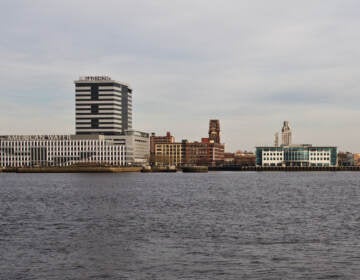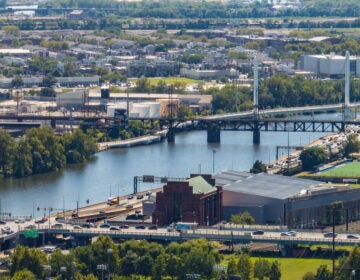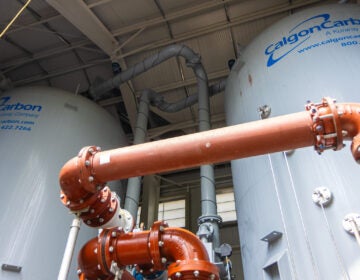Controversial proposal would lift limits on horseshoe crab harvesting in the Delaware Bay
Conservationists are concerned the plan would lead to overharvesting, and threaten the endangered red knot bird, which relies on horseshoe crab eggs for sustenance.
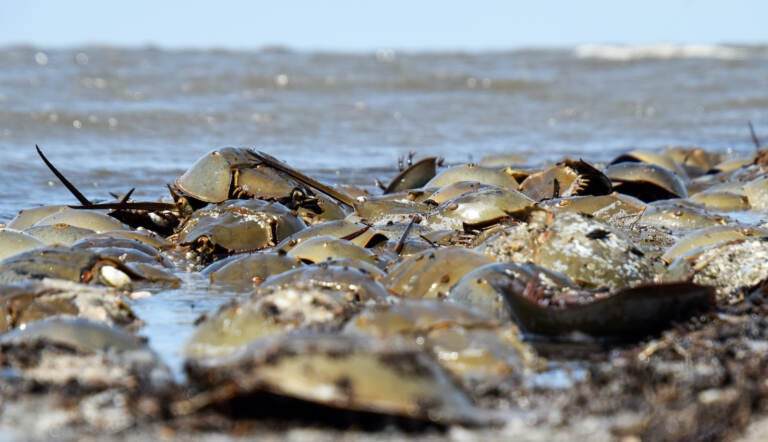
Conservationists are voicing opposition to a recommendation that would allow for the harvesting of female horseshoe crabs. (Courtesy of Chris Neff/New Jersey Audubon)
Regional conservationists are voicing their opposition to a recommendation that would allow for the harvesting of female horseshoe crabs in the Delaware Bay.
They say adding females to the recommended quota would lead to overharvesting, and threaten the endangered red knot bird, which relies on horseshoe crab eggs for sustenance on their spring stopover along the Delaware Bay during their journey from South America to the Arctic, where they breed.
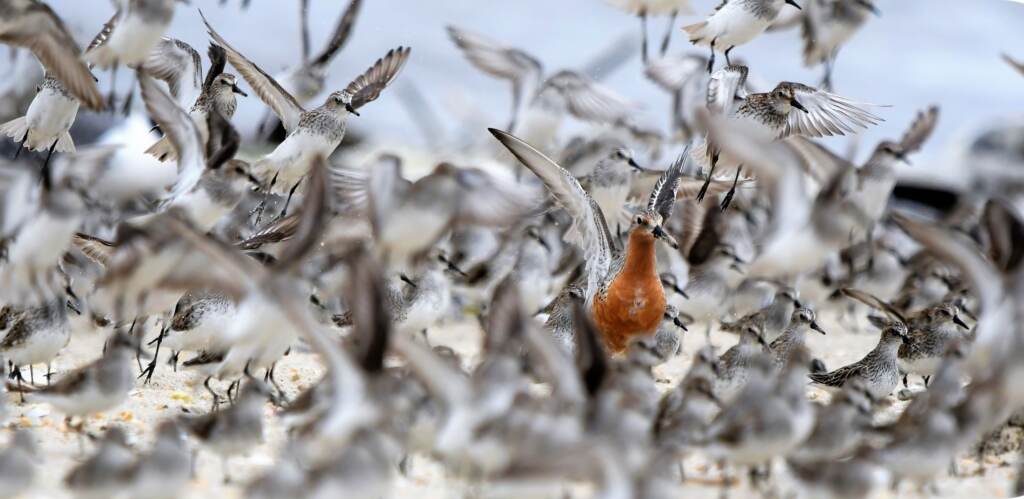
(Courtesy of Chris Neff/New Jersey Audubon)
The Atlantic States Marine Fisheries Commission, which coordinates the conservation and management of 27 nearshore fish species on the Atlantic Coast, will meet virtually Wednesday to review its framework revision for implementing harvesting quotas along the Delaware Bay in New Jersey, Delaware, Maryland, and Virginia. The commission’s previous framework recommended the harvesting of only male horseshoe crabs, but the new model meant for calculating optimal yet eco-friendly harvesting would open it up to females.
New Jersey has a moratorium on horseshoe crab harvesting, with an exemption for biomedical use, including research and the development of the COVID-19 vaccine. Delaware does not have a moratorium (but bans harvesting for biomedical purposes) and follows recommendations from the commission.
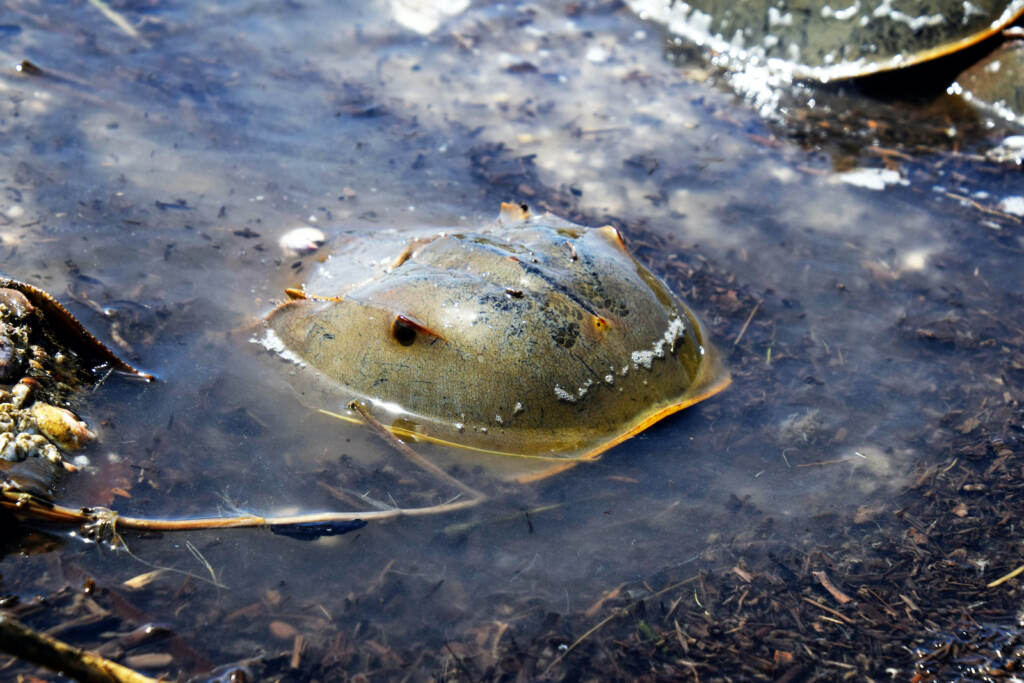
Conservationists say the revision undermines the Endangered Species Act, of which red knots are listed under.
“Any change is going to push them over the edge, and they can become extinct in the very near future,” said Steve Cottrell, president of the Delaware Audubon Society. “It’s not just the horseshoe crabs issue that’s affecting red knots, it’s also climate change — so they have two strikes going against them … Another major climate incident could just push them over the edge, and there will never be a red knot again.”
A coalition that includes New Jersey Audubon, Defenders of Wildlife, and Earthjustice sent a letter of opposition to the Commission urging them not to proceed with the revision.
“Horseshoe crabs, whose eggs nourish the red knot at a critical point in its migration, have not recovered from decades of overharvest,” the letter reads. “Now is not the time for ASMFC to revise its horseshoe crab management framework in a manner that would allow even greater harvest, including resumption of harvest of the critical female component of the population. Doing so would compound the threats facing the red knot and further jeopardize its recovery, in violation of the ESA.”
Numbers of red knots in Tierra del Fuego and Delaware Bay declined about 75% from the 1980s to the 2000s, the U.S. Fish & Wildlife Service reports. In the spring of 2021, red knot populations on the Delaware Bay reached an all-time low. Conservationists found fewer than 7,000 on the New Jersey and Delaware sides of the bay during May. That’s about a third of that found in 2020 and the lowest since the early 80s when the population was about 90,000.
Some scientists say low ocean temperatures in the mid-Atlantic in 2020 delayed the spawning of horseshoe crabs until early June, when the birds had already left the bay. It’s estimated many of those birds died before reaching the Arctic because they didn’t have enough food in the bay.
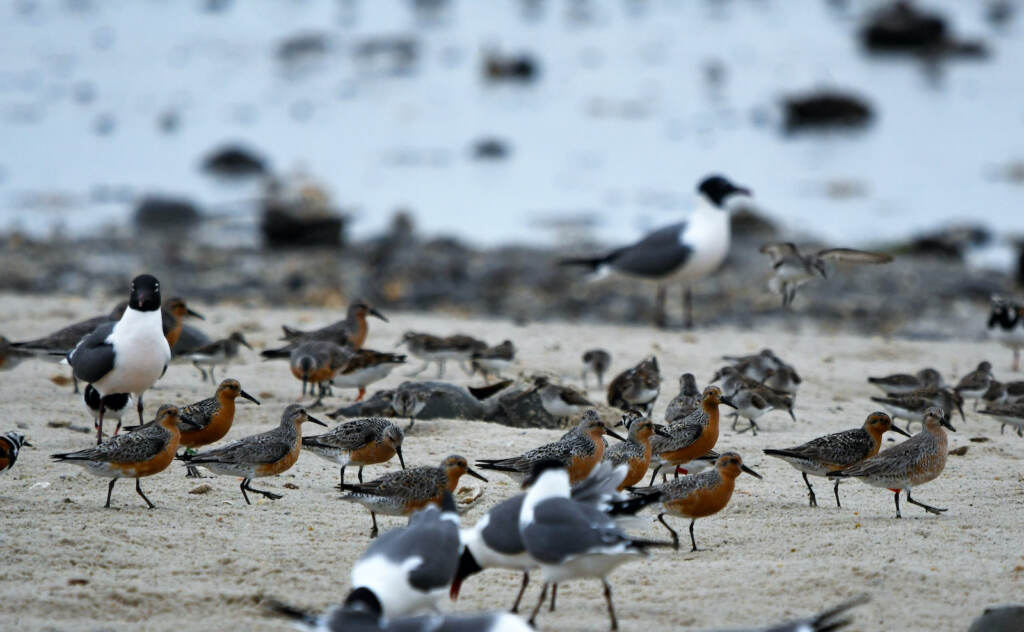
“Often there’s no food available when the birds arrive. There’s still snow on the ground, so they have to wait out until snow melts before food becomes available,” said David Mizrahi, vice president of research and monitoring at New Jersey Audubon. “And if they don’t have enough energy reserves, then that compromises their ability to survive.”
The commission manages the harvest of horseshoe crabs in the Delaware Bay to maximize the number available for collection, while also attempting to protect the species.
Horseshoe crabs in the region are harvested commercially as bait for the American eel and conch and whelk fisheries. Bait harvests in the Delaware Bay in New Jersey, Delaware, Maryland, and Virginia have been limited to 500,000 male-only horseshoe crabs since 2012.
The revised framework makes several changes. For example, previous population models for horseshoe crabs and red knots were largely based on their health and development taken from the literature that was not always specific to Delaware Bay. Now both species have population models based on data collected in the region over the past few decades.
A tentative base run of the revised framework — which will be updated following Wednesday’s meeting — found that the recommended harvest in 2019 would have been 499,939 male and 138,243 female horseshoe crabs under the new system.
The revised framework makes several advancements in understanding populations, reads a public document explaining the changes. In it, the commission contends that “the intent of ensuring that the abundance of horseshoe crabs does not become a factor limiting the population growth of red knots” remains intact.
But New Jersey Audubon’s Mizrahi calls the decision “inappropriate and misguided,” and believes it was made “behind the curtain” without stakeholder input.
“We urge the commission to reconsider and delay any vote to approve or adopt the framework and organize a stakeholder process that’s consistent with the way the whole framework was developed a decade ago,” he said.
A spokesperson for the commission in an email said that following Wednesday’s meeting, its management board will “consider initiating a public process to explore what changes, if any, should be made to the horseshoe crab management program.”

In the meantime, Delaware Audubon is researching legal options, and is urging the state to follow New Jersey’s footsteps and enact a moratorium on horseshoe crab harvesting.
Delaware state Sen. Stephanie Hansen said she’s asked the state’s Department of Natural Resources for more data on the issue, and will schedule a meeting with stakeholders.
She said she believes a revision to the commission’s framework is premature, because more data is needed to ensure horseshoe populations are healthy enough to expand harvesting.
Hansen, too, has written a letter to the commissioners urging them to delay the matter until 2021 data is collected on the number and the body weight of red knots on the Delaware Bay, as well as mortality rates for horseshoe crabs used for biomedical purposes in states that allow it.
“We do have an industry here in Delaware that relies on horseshoe crabs as bait, and so we want to make sure that we’re sensitive to that industry. But … horseshoe crabs are incredibly important for two other really important reasons,” Hansen said.
She noted that horseshoe crab blood has been critical to the development of COVID-19 vaccines and wants to know how that has impacted the local population.
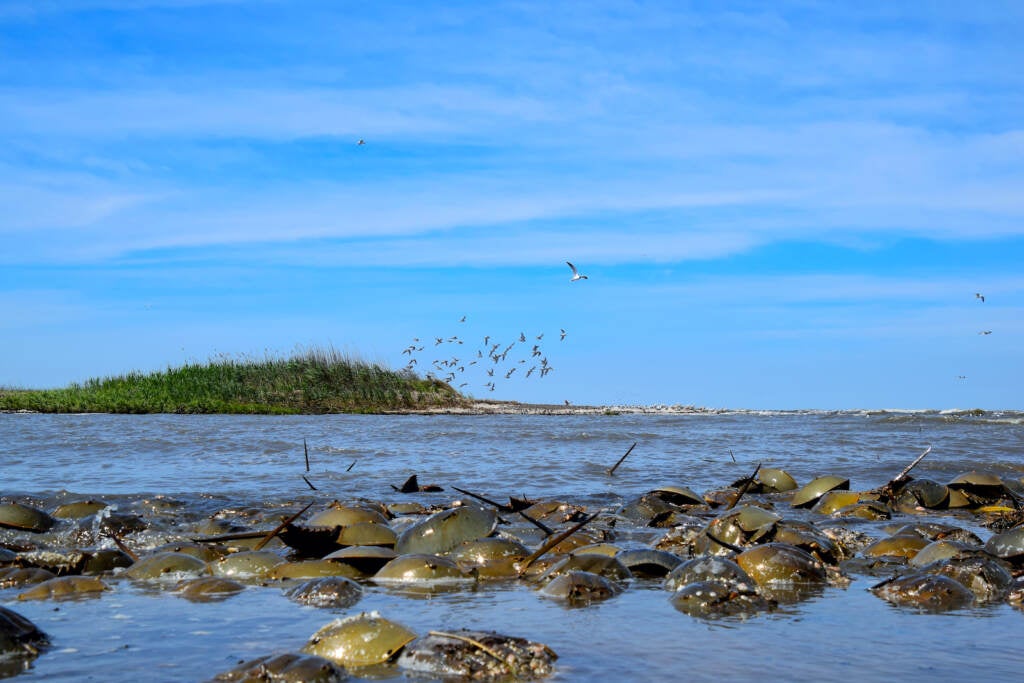
“And how has the amount of horseshoe crab eggs increased, or has it increased, so that we’re able to support the threatened red knots?” she said. “So that along with being harvested for bait, along with being discarded in the process of fishing for other catches in the Atlantic, these are all things that affect the number of horseshoe crabs that we currently have and depress that number. And we don’t have that [2021] data right now. That’s why I think that it is premature for the commission to right now be considering lifting restrictions on horseshoe crab harvest.”

Get daily updates from WHYY News!
WHYY is your source for fact-based, in-depth journalism and information. As a nonprofit organization, we rely on financial support from readers like you. Please give today.





